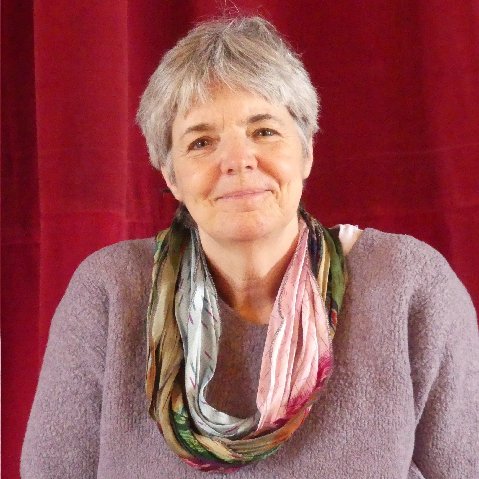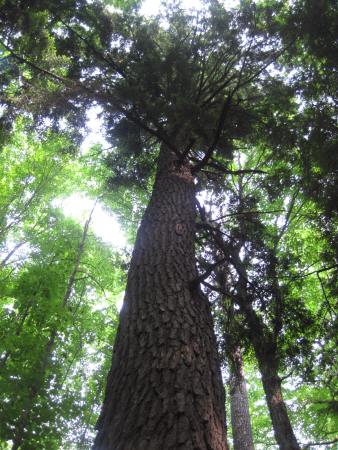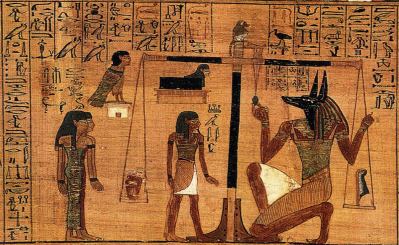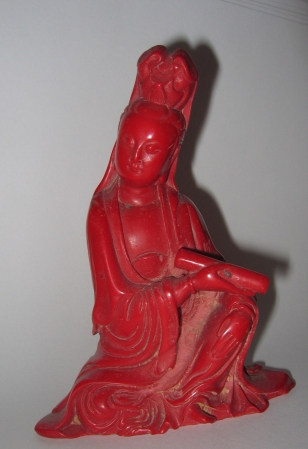
For millennia, people have struggled for gender and many other kinds of equality, with progress achingly slow and sometimes regressing. Egalitarian societies have existed and do exist, such as those described by Marija Gimbutas and Heide Goettner-Abendroth and others. So why does a 21st century egalitarian world seem so far away? Sometimes looking at challenges from a fresh perspective can be illuminating as well as inspiring for the long journey ahead. So, what if we envision equality as a tree, those wondrous beings that make life on earth possible and symbolize our world in so many cultures? What are the roots, the source truths which lead to all forms of equality and, if embraced by everyone, would make equality an assumed fact of life? What is the trunk where the roots manifest as positive supports for equality work? What are the branches, our acts reaching up towards our greatest aspirations for a truly equal society?

Let’s start with the roots, the basic statement from which all forms of equality grow. To me it is “All participate in the essential life force of the universe and are therefore inherently, completely, and infinitely valuable.” “Essential life force of the universal” may or may not refer to a deity, depending on individual beliefs, but it does have a spiritual element in that it relates our individual existence to that universal essence which gave us life, connects us to all other beings, and is beyond any personal characteristics. You may have a different root statement but I think that any root statement is more powerful with a spiritual element.
The concept of spiritual equality is, of course, not new, and has been invoked often related to modern equal rights movements. However, it is also at the heart of various ancient myths and practices from all over the world. What can we learn about spiritual equality and its meaning for our own time from these?
Spiritual equality starts at humanity’s creation. A number of goddesses explicitly made everyone from the same Earth-based material. This, to me, implies that spiritual equality is based in the most fundamental birth of our very being. Among these are Indara of the people of Pacific Celebes, who created humanity from stone, and the Sumerian Mami, who fashioned everyone from clay.
This equality is affirmed in practices demonstrating that the Divine recognizes all as equal. Rome’s Bona Dea was celebrated every December when women from every station in life, including enslaved female workers, gathered together because, as Patricia Monaghan notes “all women were equal in the goddess’s eyes“. The Eleusinian Mysteries, among the most popular in ancient Greece, brought together people of any status as long as the celebrants spoke Greek and had not killed anyone.

Spiritual equality at birth and in life is followed by equality in death. All who entered the Sumer’s Underworld were stripped of symbols of their worldly status and then judged. The heart of each deceased person was weighed against the feather of Egypt’s Ma’at, goddess of truth and justice, while Shait followed each person through life and judged them after death. Babylonia’s Belit-Seri kept records of each life and called out judgements. China’s Tou-Mou also recorded deeds and passed judgement on all, no matter how elevated or low their status in life.
What about the trunk? What comes from the roots that support us in our work in the world? In these myths, spiritual equality requires accountability leading to both justice and transformation. In the story of Sumer’s Inanna, her judgment, execution and revival are the means for her to acquire greater wisdom, depth, and power. In the Greek story of Demeter, justly holding the perpetrators of Persephone’s abduction, even though they are gods, accountable causes the transformative return of the world’s abundance. Scandinavian’s Syn, who judged everyone at death and kept those who were unworthy out of heaven, was also a goddess of justice because she was absolutely fair. We have seen the power of accountability for rendering justice as well as transformation to right the wrongs of inequality in, for example, commissions on truth and reconciliation.

Spiritual equality is also a partner to compassion. China’s Kuan Yin, for example, so valued each human that she vowed to maintain human form until all were enlightened and hears the prayers of all who call upon her. Spiritual equality and its relationship to compassion also lead to non-violence, again demonstrated by Kuan Yin whose example inspires her followers to avoid harming any living being as each is sacred. When we work for a world that values compassion and non-violence, so, too, do we bring about equality.
What about the branches and leaves, our own individual actions? Many of the goddesses mentioned above came from highly unequal societies, so another lesson from the myths and their cultures is that clearly we must act on our commitment to spiritual equality to make change. That could be educating, legislating, organizing, speaking out, standing up, or whatever feels right to you. When we do these actions supported by the truth of our roots and the power of our trunk, perhaps we are better able to articulate our vision and inspire our own and future generations toward real and long-lasting change.
Just as botanical trees interconnect with one another, the trees of equality, justice, compassion, peace, and every other element of the society we are striving for are all interconnected. They each require and sustain one another. While no one strategy will bring about worldwide change, sometimes new ways of thinking can help us in our work. Perhaps those of us who find meaning in trees can visualize a Forest of Harmony representing all these connected elements bringing new life to our planet as a way to stay focused and energized over the coming years. May a better world bud, grow, and flourish!
Sources:
The New Book of Goddesses and Heroines by Patricia Monaghan
The Encyclopedia of Goddesses and Heroines by Patricia Monaghan
Carolyn Lee Boyd is a writer, student drummer, and herb and native plant gardener. Her essays, short stories, memoirs, reviews, and poetry have been published in, among others, Feminism and Religion, Return to Mago E-Magazine, Sagewoman, The Goddess Pages, Matrifocus, and The Beltane Papers, and various anthologies. She would love for you to visit her at her website, www.goddessinateapot.com where you can find some of her free e-books to download.
Photograph of weighing of the heart by the British Museum; original artist unknown. Public domain.The Weighing of the Heart from the Book of the Dead of Ani. At left, Ani and his wife Tutu enter the assemblage of gods. At center, Anubis weighs Ani’s heart against the feather of Maat.


This is an important post and i think using the tree is an excellent metaphor – However, with that much said I must object to the words “Spiritual equality starts at humanity’s creation.” All of nature naturally weaves spirituality into her/his whole beginning with those trees of which you speak. I encourage you to read “Finding the Mother Tree” by Suzanne Simard – this book will give you an idea of what i am talking about.
LikeLiked by 1 person
Sara, thank you for your comment. Rereading the sentence, I think you are right! I hadn’t thought of it that way, but your more expansive perspective is important.
LikeLike
Thank you
LikeLike
I love the metaphor of tree as humanity with roots, trunk, branches, and leaves as universal symbols of the life created by goddesses around the world. You’ve done excellent research and written a most persuasive post. But now…….well, how do we get people–mostly men, of course–who know nothing about goddesses and the earliest faiths to read and understand? Siiiiiiggggghhhhhh. (Very deep sigh.) Alas.
Your final paragraph is genius. I’m sighing again as I think about what we all see and hear on the news (TV, online, whatever) every day. Maybe you can skywrite this paragraph in the skies all over the world? Bright blessings.
LikeLiked by 2 people
Thank you for your kind words! Yes – that’s the question – how to broaden perspectives generally. I wish I had the answer! The news and all that’s going on can certainly be disheartening, but we’ll all just have to keep working on making things better. Bright blessings to you!
LikeLiked by 2 people
I truly enjoyed your post and do relate to the energy of trees, out of many experiences. Thank you for sharing.
LikeLiked by 1 person
Thank you so much!
LikeLike
A fabulous take on trees. I love you how weave in the myths and the goddesses. Many layers of meaning. Thanks.
LikeLiked by 1 person
Thank you so much!
LikeLike
Love the tree energy! Great post, Carolyn. I just wrote about Asherah, the Israelite / Canaanite Goddess of sacred trees, when this popped up in my reader. There is much to be learned from the branches and there is knowledge in the roots. “Many of the goddesses mentioned above came from highly unequal societies’’ …. How ironic that even in Goddess cultures women were often lacking in agency and equal rights.
LikeLiked by 1 person
Thank you so much! I’m so glad you enjoyed it! Societies that revere female divinities but do not respect human women are indeed a conundrum to me also. I believe that some of the answer is that the Goddesses were first celebrated in deep history when those societies were more egalitarian and their worship in some form remained after the societies became more patriarchal. But its still puzzling to me!
LikeLiked by 1 person
I agree. It started off differently than it ended. The religious patriarchy felt very threatened by Goddess worship and the Divine Feminine.
LikeLiked by 1 person
Oh trees!! My favorite spiritual beings. We can learn so much from them. Wonderful, rich and multi-dimensional post, Carolyn. I still remember your blog, Goddess In a Teapot. 💜
LikeLiked by 1 person
Thank you so much! It’s so good to hear from you! Goddess in a Teapot is still going – I’ve recently updated it and hope to make it more active in the near future. I just went to your sites which are wonderful!
LikeLiked by 1 person
Thank you for reading, Carolyn. I’ll stop by Goddess in a Teapot. I have such fond memories of it from when I had my blog Romancing the Crone. 🙏
LikeLike
Love the metaphor of the tree. The world has a long way to go in this respect and each of us have to do our little bit for equality and equal value for all of creation. Funny how religion often makes differences and weighs each of God’s creatures differently.
LikeLiked by 1 person
Thank you for your comment! Yes, everyone can have a part in making fundamental changes happen by doing what they can wherever they are.
LikeLiked by 1 person